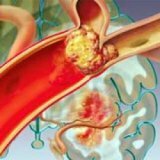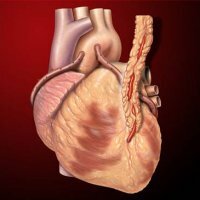Classification of ischemic heart disease

IHD is ischemic heart disease, which is a serious disease of the human cardiovascular system. The disease can have a variety of signs and symptoms, which cause a wide variety of clinical forms of the disease.
Each form of coronary heart disease has its own characteristics, which are usually distinguished according to two main factors:
- Symptoms and signs of the disease
- Treatment of
disease Therefore, it is necessary to learn more about each form of IHD and to determine the necessary treatment of the patient. Ischemic disease, in the first place, causes damage to the coronary( coronary) vessels of the heart, thereby limiting the flow of the required amount of oxygen to the heart. But this description is familiar to everyone, and it does not describe in detail the entire process that occurs in the patient's heart, hence - the impossibility of determining the exact diagnosis and the wrong treatment. This description simply serves well as a base for developing impressions and a correct idea of possible variations of the disease that may be present in the human body. In nature, there are forms of IHD - a variety of variants of the disease, which have the same characteristic( insufficient supply of oxygen to the heart) for various reasons for its occurrence. Variants of IHD differ in several indicators, which determine the rate of disease development, its activity, duration and causes. It is also possible to single out in a separate group and expressions of various violations of the functioning of the cardiovascular system and the personal characteristics of the system in each patient.
All these indicators and characteristics of the human body determine the nature of the passage of the disease and possible ways of its cure. Earlier classification of ischemic heart disease was unknown, as the equipment and past knowledge about this disease were inadequate and could not conduct an in-depth analysis of superficial, seemingly, problems. It was believed that a number of diseases( which now stand out in several groups of diseases), was triggered by oxygen starvation of the heart. But the last couple of dozen years of development of medical research, together with modern equipment, provide a detailed classification that says that the consequence of oxygen starvation can be several synonymous diseases, which, despite their nature of origin, have a variety of properties.
Today there is an active classification of IHD:
- Heartless ischemia of heart( BIM)
- Angina
- Cardiosclerosis
- Myocardial infarction
- Mikrovascular angina
- Heart failure
- Arrhythmia
These diseases are types of ischemic disease, and they are different( agree, arrhythmia and myocardial infarction, It would seem, very different diseases of the cardiovascular system).They have cardinally different clinical status, but the root cause of all these ailments is precisely a violation of the full supply of oxygen to the heart( as has been repeatedly stated above).
What is angina itself?
Angina - a variety of coronary artery disease, about which you've heard more than once, because it is a very common, as well as tachycardia and arrhythmia. Symptoms of this disease is severe pain in the chest area, strong shortness of breath. Such symptoms are characteristic of stable angina that occurs in most cases to date. Most often, pain occurs with physical activity, since the heart muscle requires more oxygen for full exercise. It is worth noting that this disease has a predictable nature, ie. E. Its consequences, causes and systematic pain does not cause particular surprise and expected.
The course of the disease is favorable, especially if the systematically treated and comply with all norms and rules of behavior in angina pectoris.
There is also another kind of this disease - Prinzmetal angina, which has other features:
- Spasm - narrowing of heart vessels
- Seizures may alternate with the usual signs of angina, if the disease is developed against the background of atherosclerosis.
- If the disease is not related to coronary artery disease and atherosclerosis, it can occur even in young people.
This type of angina is more painful than ordinary angina and is more dangerous.
Arrhythmia
Arrhythmia is also a variety of heart disease, but, unlike the already described angina, it is more tolerable and does not have such serious consequences with proper treatment. This is a violation of the heart rhythm, more precisely, a deviation in the right rhythm of the heart, which can express both temporary and permanent interruptions. When arrhythmia, a person feels heartbeat, sometimes you can note weak pain in the heart and high blood pressure, heartbeat for a while, or chaotic and violent heartbeat. Arrhythmia is now considered a curable disease by constant stabilization of the heart, but there is no certainty that the arrhythmia will recur, it does mean that the cardiovascular system itself tends to have this disorder.
Mikrovascular angina
This is a special form of IHD, which is extremely rare, but not so little-known. To date, more than 5% of people with IHD have microvascular angina, which has the following symptoms:
- , absence of epicardial changes and typical atherosclerotic symptoms.
- morphological and functional disorders of SC.
Cardiosclerosis
Cardiosclerosis is a typical disease of IHD, in which scar tissue is formed in the heart muscle. The cause of the development of cardiosclerosis is atherosclerosis, myocardial infarction, or myocarditis. When the disease with cardiosclerosis is contraindicated to take alcohol and exercise. But it is also contraindicated to lead a sedentary method in case of illness, since this will only aggravate the situation. Ideal options are constant, moderate loads.



